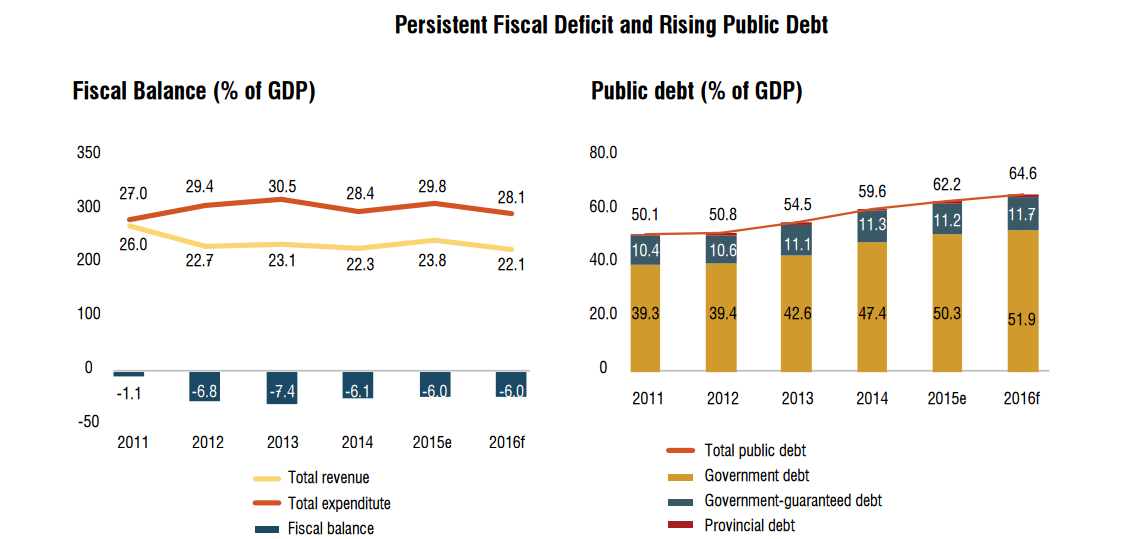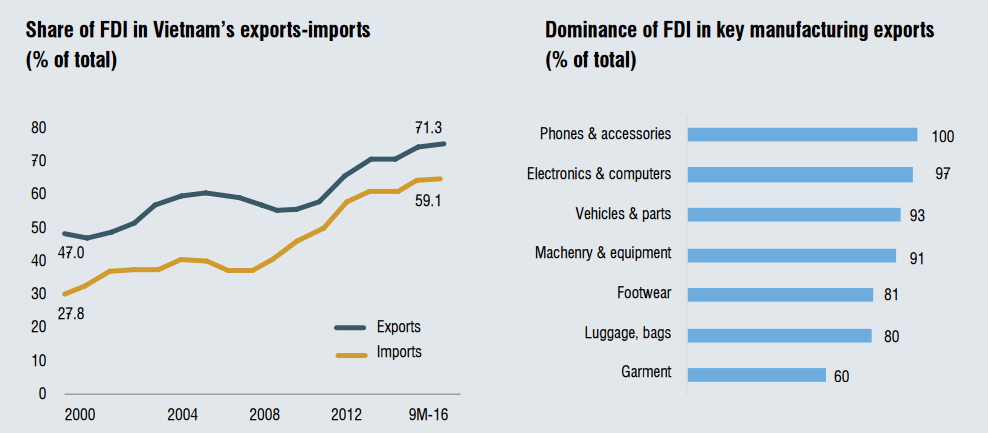|
Vietnam's GDP to grow at 6.3 per cent for 2017-2018
Vietnam’s medium-term outlook
remains favorable, and its growth prospects may improve to 6.3 per cent from
2017-2018, according to the World Bank’s latest Taking Stock report released on December 5.

The latest World Bank report predicts Vietnam's economy
to grow over the next few years.
For 2016 alone, the World Bank estimated the economy
would grow 6 per cent. The figure of 6.3 per cent for 2017-2018 is based on
an expected pick-up in global activity, the World Bank report said.
The report showed that Vietnam’s growth slowed to 5.9 per cent
during the first three quarters of the year mainly because of a severe drought
that reduced agricultural output, cut down on oil production and slowed
external demand.
The fundamental drivers of growth – resilient
domestic demand and export oriented manufacturing – remain in force.
Vietnam’s growth was accompanied by low inflation
and widening current account surplus. Despite price hikes for health and
education services, core inflation remains low and headline inflation is
expected to stay below the official target of 5 per cent.
Mr. Ousmane Dione, World Bank Country Director for
Vietnam, pointed out that Vietnam’s macroeconomic stability creates a favorable
environment for policy makers to accelerate structural reforms, which is
crucial as the country moves toward a more productivity-led growth
model. “The adoption of the 2016-2020 economic restructuring plan by the
National Assembly in November, for instance, would address some of the emerging
obstacles to growth in the economy,” he said.
Vietnam’s fiscal deficit remains sizable and is
approaching the statutory limit of 65 per cent of the gross domestic product,
but the government has reinforced its commitment to achieving fiscal
consolidation in the medium term.

Source: the World Bank's Taking Stock, December 2016.
The economy’s recent performance owes in part to rapid credit
growth and an accommodative fiscal stance, which may support growth in the
short term but amplify existing medium-term financial and fiscal risks.
In addition, easing monetary conditions and
reducing credit growth can exacerbate existing macroeconomic and financial
vulnerabilities. Several risks could adversely affect medium term prospects
such as delayed implementation of structural and fiscal reforms, a further
slowdown in the global economy, fragile global financial market conditions, and
the prospect of rising interest rates in the US.
The FDI sector continued to be an engine for Vietnam’s trade
performance. The FDI sector accounts for 70 per cent of Vietnam’s total exports
and its non-oil export value has been growing by a staggering 25 per cent on
average over the last decade. FDI enterprises also account for about 14 per
cent of fiscal revenue.

Source: the World Bank's Taking Stock, December 2016.
In response to the question about the impact of newly elected US
President Donald Trump’s announcement to withdraw from the Trans-Pacific
Partnership (TPP), Mr. Sebastian Eckardt, Senior Economist
at the World Bank Group, said that Vietnam’s economy would not
be impacted much in the middle term. “Vietnam is still the country that
benefits most from this agreement,” he affirmed.
The report also showed that Vietnamese agriculture
now sits at a turning point. The sector now faces growing domestic competition
from cities, industry, and services for labor, land and water. Rising labor
costs are beginning to inhibit the sector’s ability to compete globally as a
low cost producer of bulk undifferentiated commodities.
Going forward, Vietnam’s agricultural sector needs
to generate “more from less.” That is, it must generate more economic value and
farmer and consumer welfare, using less natural and human capital and less
harmful intermediate inputs.
According to the report, the Vietnamese government
has played a major role in agricultural development. But the government will
need to lead less and at the same time facilitate more to transform Vietnam’s
agriculture and agro-food system.
For example, the government can undertake less direct investment in
agriculture while focusing more on facilitating a more active agricultural land
market, supporting rural infrastructure, reducing the transaction costs of
farmers and agro-enterprises, and revitalizing the country’s agricultural
innovation system.
VET
|
Thứ Ba, 6 tháng 12, 2016
Đăng ký:
Đăng Nhận xét (Atom)
Không có nhận xét nào:
Đăng nhận xét